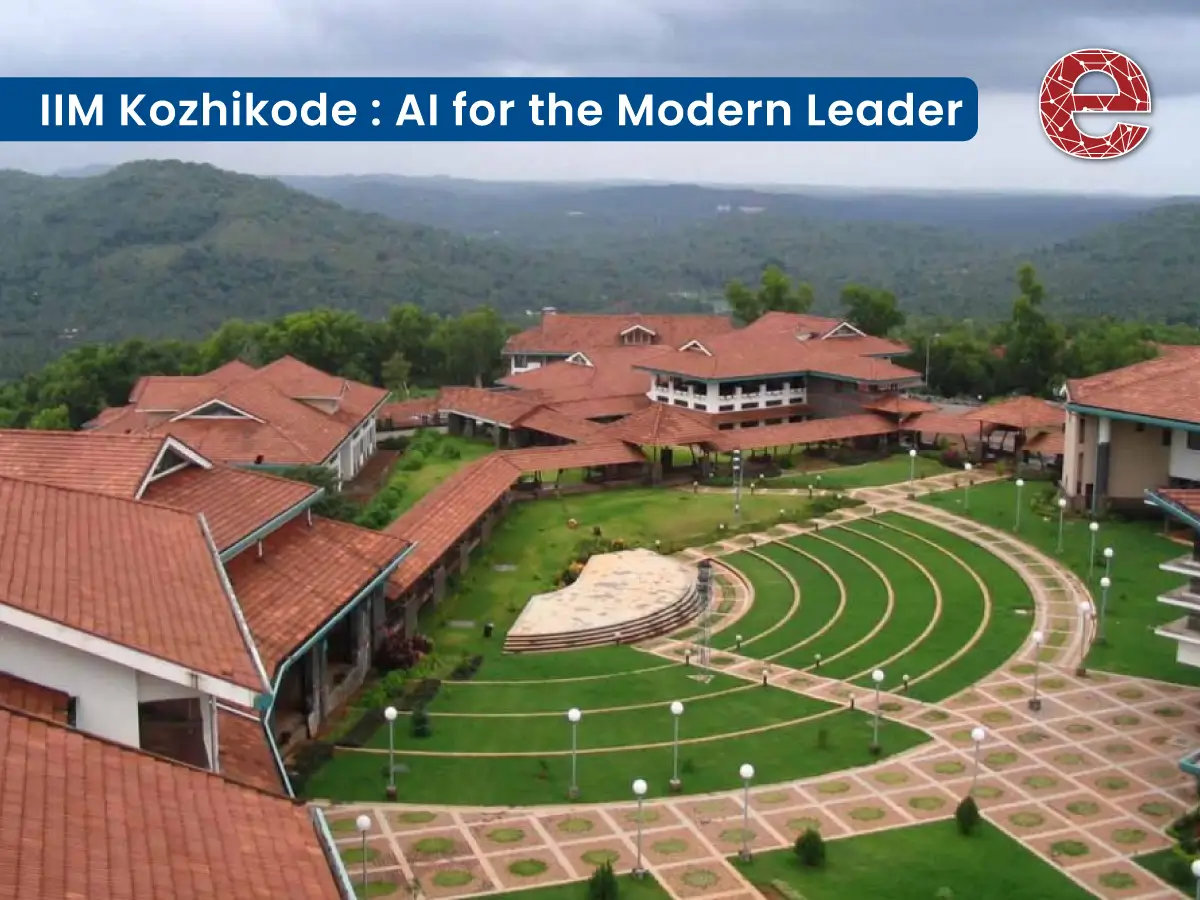Robotics: A Game Changer for Industries
Tech Updates

What are Robots and Robotics?
Robots are automatically operated machines that replace human effort, though they may not resemble human beings in appearance or perform functions humanlike. By extension, Robotics is the engineering discipline dealing with Robot design, construction, and operation. Each Robot has varying levels of autonomy. These Robots have many autonomous functions that operate independently of outside stimuli and are human-controlled, which execute duties.
The word 'Robot' derives from the Czech word Robot, which implies "forced labour." The term originated in the 1920 drama R.U.R., referring to the play's protagonists, mass-produced labourers devoid of creative thought.
Robotics is the combination of science, engineering, and technology that creates devices called Robots that mimic or replace human tasks. Robots can execute simple and repetitive activities more efficiently and accurately than humans, making them ideal for sectors such as manufacturing. However, artificial intelligence in Robotics has enabled Robots to handle more complicated situations in various areas, including healthcare, automobiles, construction, education and the space sector.
Rise of Robotics
Griffith Taylor created the first known industrial Robot in 1937 when he designed a crane-like device capable of automating the stacking of wooden blocks following pre-programmed patterns. George Devol dubbed the 'Grandfather of Robotics', received the first industrial Robotics patent in 1954.
Since then, significant developments in Robotics have occurred, such as artificial intelligence (AI), machine learning, humanoid Robots, Autonomous Robots, and many more. According to a 2023 report by the International Federation of Robotics, The new report recorded 553,052 industrial Robot installations in factories worldwide – a growth rate of 5% in 2022. Region-wise, 73% of all newly deployed Robots were installed in Asia, 15% in Europe and 10% in America. Asia is the world’s largest market for industrial Robots, with 73% of all newly deployed Robots installed in Asia.
Robotic revolution in various sectors: -

1. Healthcare Sector: -
_1722339372.webp)
The advent of Robots has, quite fittingly, revolutionised the field of medical sciences. The impact of Robotics on life was never anticipated to the extent that medical Robots now serve a variety of purposes in the healthcare industry. Robots such as telepresence enable physicians to monitor patients from a distance, rehabilitation aids patients in regaining some motor skills after surgery, surgical Robots support surgeons during a range of procedures, and companion Robots help older patients feel less depressed and anxious. Robots can help healthcare facilities with cleaning and clinical administration, as well as delivering medical supplies and prescription drugs.
- Robot-Assisted Surgery: Robots with less invasive techniques give doctors more precision, flexibility, and control. Thanks to technology like the da Vinci Surgical System, complex procedures may now be conducted with fewer incisions, less discomfort, and quicker recovery times. These technologies have transformed the surgical technique; formerly, surgeons had to make direct and extensive incisions due to immobility and limited body space. However, the da Vinci Surgical System requires just 1-3 holes to accomplish surgery.
- Telemedicine and Remote Surgery: Remote-controlled Robots allow surgeons to operate on patients from afar using Robotic equipment controlled by high-speed internet connections. This feature is useful in areas where doctors can't reach there in time. Companies like Stryker, CMR Surgical, Medtronic, and Smith&Nephew have made remote surgery possible. Now, people can have surgeries from experts no matter where they live.
- Rehabilitation Robotics: Exoskeletons and Robotic limbs help patients with physical therapy and rehabilitation. They help patients to regain mobility, strength, and coordination following injuries or strokes. These Robots are also known as wearable Robots; a person with bodily injury or condition can wear the Robot like a bodysuit. The Robot will do the patient's movements to help them gain independent body movements. Ekso Bionics, Hocoma AG, Rex Bionics, are the top companies which make these Robots.
- Robotics in Older Care: Robots are being created to help older people with everyday duties, track their health, and provide companionship. This reduces caregiver stress and increases the quality of life for elders. These kinds of Robots are equivalent to a person helping elderly people who have difficulty walking, moving, remembering medicines, and needing a talking companion. ROBEAR, SAM, Zora, Buddy Robots can fulfil all these requirements.
- Robotics in Pharmacy and Drug Management: Integrating Robots in pharmacies is a game-changer, automating drug delivery and packaging to avoid errors and boost productivity. Their role even extends to hospitals, where they facilitate safe and efficient drug transport to patients' rooms, and even in manufacturing medicines, these Robots can make millions of drugs ready to deliver in a single day; with this, there isn't any shortage of drugs nowadays.
-
Diagnostic and Therapeutic Robots: Robots are used in diagnostic imaging, such as Robotic MRI, X-ray, Sonography, and CT-scan devices. They can perform scans more accurately and consistently to produce proper reports and reduce the chance of radiation exposure to patients and others. They also help provide exact doses of radiation during cancer treatments.
-
Disaster Response and Emergency Medicine: Robots ensure safety and efficiency in hazardous areas or disaster zones. They are deployed to assess problems, transport supplies, and provide medical aid when human access is limited or risky, offering a reassuring presence in emergency medical services. After the 2011 Earthquake in Japan, Japan created Robots to help in these disasters. One of these Robots, called Quince, Quince is equipped with several cameras and not only assists in rescue efforts but also surveys the affected site.
2. Automotives Sector: -
_1722339382.webp)
Robotics has also changed numerous processes in vehicle manufacturing, increasing efficiency and accuracy. Welding, painting, component assembly, and quality assurance are all tasks which took humans weeks to complete that can be done in a single day by Robots. Automated Robots, like the flexible Six-Axis Robot, improve accuracy and consistency in assembly and material handling operations, the Yaskawa MPX Robot which can paint the entire car, the AGVs for transporting heavy parts and even the automated cars like Tesla, Waymo and Zoox.
- Manufacturing and Assembly: Robotics is widely used in automobile manufacturing plants for operations such as welding, painting, component assembly, and quality assurance. Automated Robots can complete these activities more accurately and consistently, increasing efficiency and eliminating mistakes. Robots, like the Six-Axis Robot, perform tasks such as precise assembly, welding, and material handling. It has six degrees of freedom, allowing it to easily manoeuvre in a three-dimensional space, enabling efficient and accurate construction of car components and car assembly.
- Material Handling: Automated guided vehicles (AGVs) and Robotic arms transfer goods and components across industrial facilities. This automation improves logistics by reducing the need for physical labour while handling extensive or fragile items. The Lowpad, Eliport, and Scallog Robots can carry upto 5000 KG of load in a single round and deliver parts of 10 cars quickly and efficiently.
- Quality Inspection: Vision systems and Robotic arms equipped with sensors examine the quality of components and finished automobiles. Humans have limitations, but these systems can detect faults with high precision and consistency, guaranteeing that only high-quality items enter the market quickly.
- Painting: Robotic painting systems apply paint uniformly and accurately to automobile bodywork. These systems can respond to diverse vehicle shapes and sizes, providing equal coverage and reducing paint waste. These Robots are either 1-2 axes where they can apply even coats of paint in every part of the car. Currently, Yaskawa MPX, ABB IRB 5400, and Fanuc P-50iB, Robots are the best in the marke
- Welding: EVS, Panasonic, ABB, FANUC and KUKA Robots can conduct welding activities quickly and accurately, which is critical for combining various sections of the vehicle's chassis and body. Automated welding Robots can operate constantly without tiredness, resulting in higher quality and shorter production times.
-
Autonomous cars: The development of self-driving vehicles like Tesla, Waymo, and Zoox relies mainly on Robotics and artificial intelligence. These cars utilise sensors, cameras, and powerful algorithms to assess their surroundings and drive through all conditions safely without human assistance. The car companies like Kia, Hyundai, Volkswagen, BMW, and Mercedes also have autonomous functions like Lane Maintain, Emergency Braking, and AutoPark; these functions get regular updates so that they can improve.
3. Construction Sector:
 (1)_1722339396.webp)
In civil engineering, technological integration has drastically altered the construction scene. As it took humans years to construct an entire building from excavation to installing wire and plumbing, making the whole process long, now Robots can do all the work day and night cutting the whole process time by half. Here is how the Robots have revolutionised the construction process
- Automated Construction Equipment: Robots and automated equipment are used for excavation, earthmoving, and heavy lifting. These devices perform accurately and efficiently, minimising labour-intensive tasks and increasing the total building pace. These Robots can do all the construction work 24/7, completing a construction time to half; these Robots are used for mixing cement, smoothing walls and floors, installation of electrics, plumbing, and cutting walls and floors. These Robots debuted in the 1960s, and since then, they have been improving and making construction easier and stronger.
- 3D Printing: Robotics is revolutionising building using 3D printing technology. Large-scale 3D printers may produce complete construction components or entire structures from concrete materials. This approach is speedier and more cost-effective than traditional construction methods. IIT Madras made India's First 3D-printed house in 2021. The house was 600 sq. feet and had a lifespan of 50 years. Many builders now use 3D-printing Robots in construction, making them cheaper and more durable.
- Prefabrication and assembly: Prefabrication facilities by Robots to construct building components such as wall panels, floor systems, and roof trusses. All these works can be done efficiently without losing materials and man labour, making construction human-safe. These components are subsequently integrated on-site with Robotic equipment, accelerating construction and improving quality control.
- Bricklaying and Masonry: The First bricklaying Robot was invented in 1967 in Britain. Robotic bricklayers and masonry Robots can lay bricks and place stones with accuracy and consistency. These Robots can operate constantly without stopping, considerably speeding up the building of walls and facades; some Robots, like SAM100, can simultaneously lay bricks for two walls. This Robot was invented in 2015 and made construction easy and efficient.
- Structural Inspection and Maintenance: Drones with cameras and sensors inspect buildings and structures, making the walls straight and leakproof. Aerial viewpoints allow them to check structure integrity, identify flaws and leakage, and track work progress.
- Demolition and Deconstruction: Robots intended for demolition may destroy structures efficiently and safely, lowering the dangers associated with manual destruction and minimising waste during the deconstruction process, making the whole process human-safe.
-
Robotic Exoskeletons: Robotic exoskeletons benefit construction workers by minimising physical strain and stress. These wearable technologies can increase worker safety and productivity, especially for occupations that require heavy lifting or repeated actions. These Robots increase workers' physical ability to work tirelessly and quickly.
4. Education Sector: -
_1722339405.webp)
Robots in education represent a growing field where technology intersects with learning. The Robots can overcome every single human limitation in the teaching and learning process like overtime, individual learning, and workload and can make the learning process more effective and efficient;
- STEM Education: A school in Kerala has launched India's first AI teaching Robot, 'Iris'. This Robot was created in conjunction with Makerlabs Edutech. It strives to bring new educational advances by providing students with a personalised learning experience. Robots are commonly used to teach science, technology, engineering, and mathematics ideas. They may demonstrate hands-on concepts like coding, electronics, and mechanics, making students more interested. With these Robots, there is no need for a computer and projector in the classroom; a single Robot has all the features.
- Individualised Learning: Robots can adapt to students' learning paces and styles, delivering individualised feedback and coaching. Where a teacher can not keep up with all the work and finds it hard to maintain records and plans, Robots like 'Iris' can have all the records and can make individualised lesson plans without any affords.
- Special Education: Many disabled students struggle with social connections. Social Robots can be programmed to assist people in practising social skills in a controlled environment. These Robots can mimic talks and facial gestures, keep students engaged with playful activities, special care and body language to increase confidence and competence in the teaching-learning process progressively.
- Language Learning: Roybi is the first Robot to teach languages. This Robot has over 1,000 lessons to teach. Robots with voice recognition and language processing skills help students learn languages by engaging them in conversations and pronunciation exercises. A Robot can equip itself with all the languages and make students feel comfortable in the language they want to learn.
- Virtual Reality and Augmented Reality: When combined with VR and AR technology, Robots open up a world of immersive learning experiences. Students can virtually tour historical locations, replicate science experiments, and interact with virtual items, sparking excitement and potential in the educational field.
- Teacher Assistance: Robots are the best teachers teacher assistance. The NAO and Sanbot Robots can grade assignments, provide real-time data analytics on student performance, and even offer lectures. These Robots are small 3-4 feet Robots that sit with students and provide help to a teacher.
- Social-Emotional Learning (SEL): Some Robots are programmed to teach empathy, conflict resolution, and emotional management abilities
- Kismet - a Robot head that understands and exhibits emotion when interacting with humans.
- Tico - a Robot developed to improve children's motivation in the classroom.
- Bandit - a social Robot designed to teach social behaviour to autistic children.
- Jibo is a consumer-oriented social Robot that understands speech and facial expressions and seeks to form relationships with the family that adopts it.
5. Space: -
_1722339413.webp)
For as long as humans have been exploring space, we have relied on Robots to assist us get the job done, as humans can not do space travel because Lack of time, and resources. Robots are a more efficient way to launch human spacecraft. They not only carry a lower risk, but they also cost less. The role of space Robots is expected to increase. In 2024, NASA launched the Artemis Program, which aims to create a long-term presence on the moon. Robots will lay foundations, construct buildings, and transport payloads to the moon. They'll also keep astronauts company. The Robots help do many space tasks like;
- Space Exploration: The very essence of space exploration is the sending of Robotic spacecraft such as rovers (for example, Mars rovers like Curiosity and Perseverance), landers, and orbiters to study Planetary bodies. These spacecraft, made possible by the ingenuity of human-designed Robots, collect data, photographs, and samples required for scientific inquiry and comprehension of the cosmos. GLIMPSE—a space Robot Dog; CADRE—a mini rover; R5: Valkyrie, an All-electric, Remote-controlled Humanoid. These Robots, a testament to human ingenuity, have made space exploration possible.
- Satellite Deployment and Maintenance: Robots play a crucial role in ensuring the sustainability of satellite operations. OSAM-1, a Satellite Repair Robot, is responsible for the installation, maintenance, and repair of satellites in orbit around the Earth and other planetary bodies. Robots' role in satellite operations instil confidence in the future of satellite technology, including the installation of massive structures such as space telescopes, solar panels, and other sensors.
- Space Stations: Robotics are required to build and operate space stations like the International Space Station. Robotic arms like Six-Axis Robots, COBOT, and Canadarm are employed for various jobs, including transporting freight, conducting tests, repairing, and assembling satellites, space stations and telescopes.
- Planetary Mining: Robots might extract resources from distant planets or asteroids. This is being investigated for future missions using local resources for fuel, building materials, and potentially life support systems. SCAR-E is a novel climbing Robotic platform developed by AMC in collaboration with Tohoku University Space Robotics Lab (SRL), Japan. Gripping the surface as it walks, SCAR-E's design allows targeted sampling and operations in microgravity environments, making small mining possible.
Conclusion
Ultimately, Robotics is at the vanguard of technological innovation, changing areas such as healthcare, automobile manufacture, construction, education, and, most notably, space. These Robots range from automated surgical systems that improve healthcare precision to self-driving vehicles. As Robots advance with artificial intelligence and machine learning, the future offers even more incredible accomplishments, pushing the frontiers of what is conceivable both on Earth and in the vast expanse of space.
You can also read about:
- Robotics











